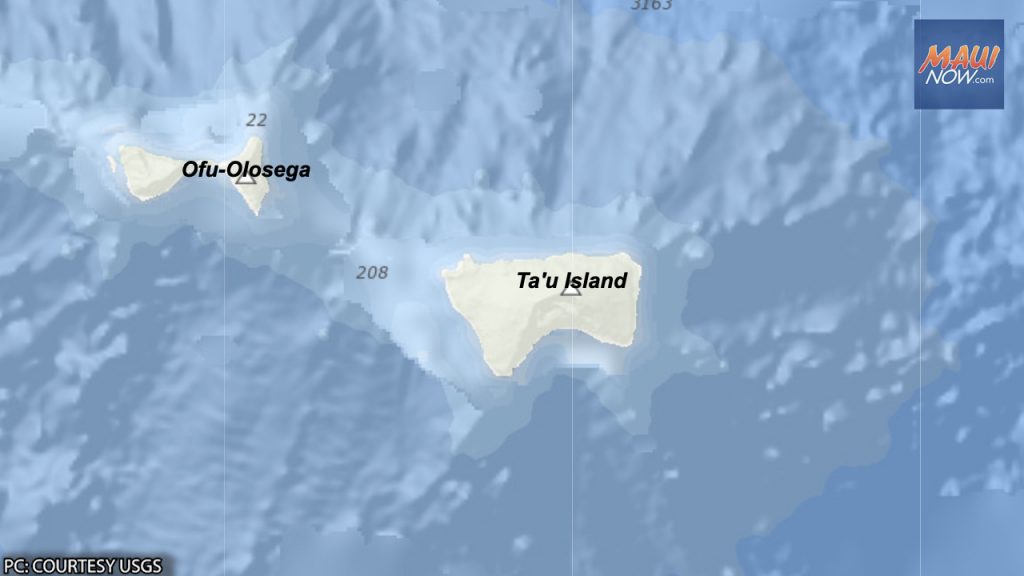Earthquake swarm in American Samoa’s Manuʻa islands
Recent activity from an earthquake swarm in American Samoa’s Manuʻa islands suggests a local volcanic source, according to the Hawaiian Volcano Observatory. The island group includes Taʻū, Ofu and Olosega.

According to the HVO, staff from the National Park of American Samoa and residents of Taʻū, indicate that activity began on July 26. There’s also been earthquakes reported by residents of Ofu and Olosega since Aug. 10. On that date, residents of Taʻū reported loud booming noises.
The HVO reports that the quakes have varied in intensity, but in general, have been described as “short, sharp jolts.”
Based on the reports, these earthquakes are probably related to either Taʻū or Vailuluʻu volcanoes, according to the Hawaiian Volcano Observatory.
Scientists with the HVO say the Taʻū shield volcano last erupted in 1866 as a submarine cone that formed between Taʻū and Ofu-Olosega islands. Vailuluʻu is a submarine seamount that last erupted in 2003, during which a cone formed within the summit caldera, according to the HVO.
“Not all earthquake swarms result in eruptions. Current low-level earthquake activity may continue and vary in intensity for days to months without an eruption. It is also possible that the swarm is an early precursor to an eventual eruption. At this time, we cannot determine which of these possibilities is more likely,” according to an HVO information statement issued on Friday night.
The HVO notes that volcanoes in American Samoa are similar to those in Hawaiʻi.
ARTICLE CONTINUES BELOW AD“If activity escalates to an eruption, it will most likely include slow-moving lava flows or low-level explosions of lava that are localized to a small area. An eruption like Hunga Tonga–Hunga Ha’apai in Tonga earlier this year is extremely unlikely as it is a different type of volcano. Volcanoes in Tonga erupt much more explosively than ones in American Samoa and Hawaiʻi.”
Hawaiian Volcano observatory
Due to limited earthquake monitoring equipment, the exact location of these earthquakes is currently unknown, and scientists plan to install additional instruments in the coming weeks.
Residents can significantly assist these monitoring efforts by noting and reporting accurate times that they feel earthquake shaking to either the American Samoa EOC in Pago Pago (684-699-3800).









